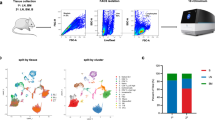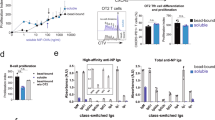Abstract
ONE of the central problems of immunology is the mechanism by which regulatory thymus derived T cells—T helper, T amplifier and T suppressor cells—interact with each other and with the precursor cells of the antibody-forming B lymphocytes. Various mediators produced by T cells acting directly or indirectly on B cells have been described. Some of these factors have been shown to enhance1–4 or to suppress5,6 the function of B cells either in an antigen-specific1,2,5 or in a nonspecific3,4,6 manner. Immune response-enhancing factors produced in vitro have been shown to replace T helper or T amplifier cell function in thymus-dependent antibody formation in vivo1,2 and/or in vitro1–4. We show here that the serum (S4) of mice injected 4 h previously with a super-optimal dose of sheep red blood cells (SRBC) contains an antigen-specific principle—specific immune response enhancing factor (SIREF)—which enhances the humoral immune response up to 60-fold when injected before a sub-optimal antigen dose into mice but not in mice injected with an optimal dose of antigen (2×108 SRBC). SIREF could not be produced in athymic nude mice and SIREF produced in BALB/c (H2d) or C57B1 (H2b) mice acted in either strain, but not in athymic mice (Table 1). These results indicate that SIREF(1) may be released from T cells (or from B cells which require T-cell cooperation), (2) acts through the H2 barrier, and (3) does not act directly on B cells.
This is a preview of subscription content, access via your institution
Access options
Subscribe to this journal
Receive 51 print issues and online access
$199.00 per year
only $3.90 per issue
Buy this article
- Purchase on Springer Link
- Instant access to full article PDF
Prices may be subject to local taxes which are calculated during checkout
Similar content being viewed by others
References
Feldmann, M. J. exp. Med. 136, 737–760 (1972).
Taussig, M. J. Nature 248, 234–236 (1974).
Armerding, D. & Katz, D. H. J. exp. Med. 140, 19–37 (1974).
Schimpl, A. & Wecker, E. Nature new Biol. 237, 15–17 (1972).
Tada, T., Taniguchi, M. & Takemori, T. Transplantation Rev. 26, 106–129 (1975).
Krakauer, R. S., Strober, W., Rippeon, D. L. & Waldmann, T. A. Science 4285, 56–59 (1977).
Henry, C. & Jerne, N. K. J. exp. Med. 128, 133–151 (1968).
Orr, K. B. & Paraskevas, F. J. Immun. 110, 456–464 (1972).
Paraskevas, F. & Lee, S. T. Eur. J. Immun. 6, 856–861 (1976).
Cunningham, A. J. & Szenberg, A. Immunology 14, 599–601 (1968).
Diamantstein, T. & Odenwald, M. V. Immunology 27, 531–541 (1974).
Author information
Authors and Affiliations
Rights and permissions
About this article
Cite this article
DIAMANTSTEIN, T., NAHER, H. Specific immune response enhancing factor in serum of immunised mice. Nature 271, 257–259 (1978). https://doi.org/10.1038/271257a0
Received:
Accepted:
Published:
Issue Date:
DOI: https://doi.org/10.1038/271257a0
Comments
By submitting a comment you agree to abide by our Terms and Community Guidelines. If you find something abusive or that does not comply with our terms or guidelines please flag it as inappropriate.



